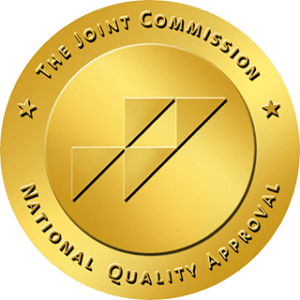Addiction is often described as a chronic, relapsing condition characterized by compulsive substance use or behavior, despite harmful consequences. While many factors contribute to the development of substance use, one of the most central is the neurotransmitter dopamine. Known for its role in motivation, reward, and pleasure, dopamine helps shape how we experience and pursue pleasurable activities.
Below, we’ll explore how dopamine functions in the brain, why it’s so pivotal in the cycle of substance use, and ways to address or prevent addictive behaviors.
What Is Dopamine?
Dopamine is a chemical messenger in the brain that influences motivation, mood, and reward-driven learning. When we engage in an activity our brain interprets as beneficial—like eating, socializing, or exercising—dopamine pathways light up, leading to a feeling of pleasure or satisfaction. This positive reinforcement encourages us to repeat the behavior.
Dopamine and the Reward System
The Brain’s Reward Circuit
Key structures in the brain, such as the ventral tegmental area (VTA), nucleus accumbens, and prefrontal cortex, form what’s commonly referred to as the reward circuit. Dopamine released from the VTA travels to the nucleus accumbens, creating the sensation of pleasure. This signal then communicates with the prefrontal cortex, which helps us plan and seek out these rewarding experiences again.
Natural vs. Artificial Rewards
While natural rewards like food, social interaction, or exercise trigger moderate dopamine release, substances like drugs and alcohol (or behaviors such as gambling or compulsive gaming) can cause a far greater “dopamine spike.” This heightened level of dopamine can overwhelm the system, paving the way for a cycle of misuse and dependence.
How Dopamine Contributes to Substance Use
Tolerance and Escalation
Over time, repeated exposure to high levels of dopamine can lead the brain to downregulate or reduce its responsiveness. This means that achieving the same euphoric effect requires higher amounts of the substance or more frequent engagement in the behavior—a phenomenon known as tolerance. As a result, people may escalate their use, further strengthening the addictive cycle.
Cravings and Withdrawal
When dopamine levels drop—whether because of reduced substance use or an attempt to quit—the brain signals that something is missing. This can lead to intense cravings and withdrawal symptoms, as the reward system has become reliant on those high dopamine surges. Individuals may feel anxious, depressed, or physically unwell until they can restore that dopamine balance.
Habit Formation and Learned Associations
Dopamine not only creates a sense of reward but also helps us form habits. Through repeated actions, the brain learns that a certain substance or behavior leads to pleasure. Contextual cues—like specific locations, social situations, or emotional states—become triggers, prompting the individual to seek out the addictive substance or activity again.

Beyond Dopamine: Other Factors in Addiction
While dopamine plays a significant role, addiction is influenced by a variety of factors:
- Genetics: Individuals may have a genetic predisposition that makes them more susceptible to addictive patterns.
- Environment: Exposure to stress, trauma, or peer pressure can also heighten the risk of substance misuse.
- Mental Health: Co-occurring disorders like anxiety or depression can lead people to self-medicate, complicating addiction treatment.
Addressing a substance use disorder often requires a holistic approach, considering emotional support, mental health care, and life circumstances in addition to the physical aspects of dependency.
Approaches to Managing Addiction and Dopamine
Medications
Certain medications can help regulate or normalize dopamine function in the brain. For example, medications for opioid use disorder (like methadone or buprenorphine) reduce cravings and stabilize dopamine levels. Similar strategies exist for alcohol and nicotine dependence.
Behavioral Therapies
Therapeutic approaches such as Cognitive Behavioral Therapy (CBT) or Dialectical Behavior Therapy (DBT) help individuals recognize triggers, manage cravings, and reshape thought patterns. By rewiring negative associations, these therapies can decrease the power of dopamine-driven habits.
Lifestyle Changes
Activities that naturally boost healthy dopamine levels, such as regular exercise, balanced nutrition, and sufficient sleep, can be invaluable for people in recovery. Engaging in fulfilling hobbies or building strong social connections can also provide healthier reward pathways, reducing the brain’s reliance on substance-induced surges of dopamine.
Support Networks
Recovery is often more effective within a supportive environment. Peer groups (like 12-step programs), family counseling, or sober living communities can offer guidance, accountability, and encouragement, helping individuals maintain recovery over the long term.
The Importance of Early Intervention
The sooner you or your loved one receives help for addiction, the better. Early intervention can prevent deeper physiological changes in the brain’s reward circuit and reduce the likelihood of severe withdrawal or life-altering consequences. Recognizing the warning signs can be the first step toward treatment.
Here are some early signs to pay attention to:
- Escalating substance use
- Intense cravings
- Neglecting responsibilities
- Withdrawing from social activities
- Changes in appearance
- Mood swings
- Increased secrecy
If you notice any of these signs, know that seeking support is the best way to take back your life. Addiction often develops gradually, and recognizing the early signs allows you to prevent the problem from worsening. Without intervention, the risks increase and may include overdose, long-term physical health problems, and more severe mental health challenges.
Conclusion
Dopamine is at the heart of why addiction takes hold—it reinforces behaviors by supplying powerful feelings of pleasure and reward. Over time, repeated exposure to substances or compulsive activities can reshape the brain’s circuitry, creating a cycle that’s challenging to break.
However, understanding the role of dopamine in addiction is also a vital step toward effective treatment, whether through medication, therapy, or supportive lifestyle changes. With the right blend of tools, resources, and community, you can overcome addictive patterns and regain control of your life.
Are you ready to make a positive change in your life? Recovery Cove is here for you. We offer substance use treatment in a caring, supportive environment where individuals are free to be themselves. To begin your journey and take back your life, contact us today at 484-549-COVE.






